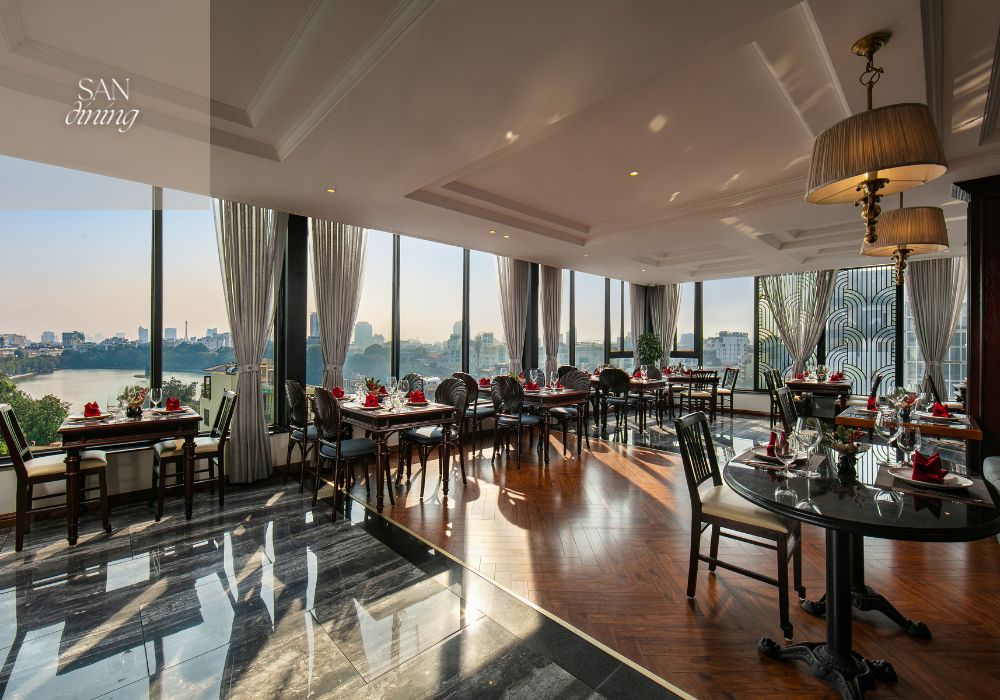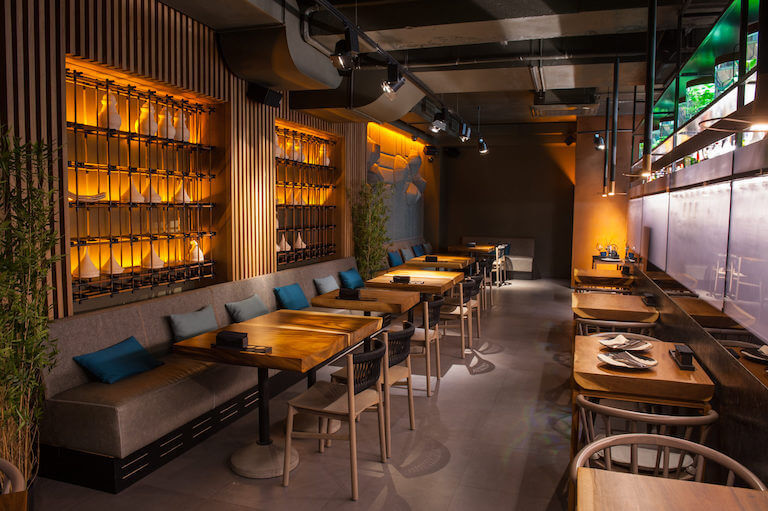Asian Fusion Restaurant: A Special Dining Experience in the Heart of Islamabad
Asian Fusion Restaurant: A Special Dining Experience in the Heart of Islamabad
Blog Article
Savor Genuine Eastern Cuisine With a Pan-Asian Spin for a Cooking Journey
Beginning on a culinary journey via authentic Asian food, enhanced with a Pan-Asian twist, supplies a special opportunity to check out the rich tapestry of flavors that define the region's varied culinary traditions. As you ponder these tempting dishes, think about the cultural narratives and historical influences that form them, each bite supplying a tale waiting to be discovered. asian fusion restaurant.

Discovering Pan-Asian Tastes
In the realm of international gastronomy, Pan-Asian food sticks out for its remarkable diversity and the unified interaction of tastes from numerous Oriental societies. This culinary method celebrates the abundant traditions and distinct active ingredients found throughout the continent, producing a tapestry of preferences that is both interesting and enjoyable. Key to Pan-Asian food is its capacity to stabilize contrasting flavors-- pleasant, salted, spicy, and sour-- while highlighting the quality and high quality of each ingredient.
From the umami-rich soy sauce of Japan to the intense chili peppers of Thailand, Pan-Asian food supplies a comprehensive combination of flavors. These elements are commonly combined in innovative methods, enhancing meals with layers of intricacy. As an example, using aromatic herbs such as lemongrass and cilantro, usual in Vietnamese and Thai food, includes a rejuvenating brightness to dishes, while the consolidation of coconut milk supplies a creamy, rich appearance.
The focus on fresh fruit and vegetables and aromatic seasonings makes sure that each dish is not just a feast for the preference buds however also for the senses. Pan-Asian food welcomes diners to embark on a cooking journey, checking out the huge and varied landscapes of Eastern gastronomy with every bite.
Combination Dishes to Attempt
While Pan-Asian food is commemorated for its traditional flavors, the modern-day culinary landscape is increasingly welcoming combination dishes that mix these traditional components with influences from other regions. This cutting-edge method not just honors the rich heritage of Asian culinary arts yet likewise presents novel taste experiences that attract modern palates.
An archetype of such a blend recipe is the Korean-Mexican taco, where marinaded bulgogi beef is wrapped in a cozy tortilla, covered with kimchi and a zesty gochujang-infused salsa. This combination weds the strong, mouthwatering flavors of Korea with the vivid, fresh components of Mexican food. Likewise, sushi burritos have gained popularity, joining together the fragile virtuosity of Japanese sushi with the passionate, hand-held convenience of a burrito, frequently featuring combination components like tempura shrimp and avocado with a drizzle of wasabi mayo.
One more notable dish is Thai curry ramen, which infuses the creamy, aromatic spices of Thai curry right into the soothing brew of standard Japanese ramen, developing a harmonious mix that tantalizes the senses. These fusion meals expand past plain uniqueness; they stand for a culinary dialogue between societies, encouraging exploration and innovation in the world of Pan-Asian cuisine.
Essential Active Ingredients and Seasonings
To truly appreciate Pan-Asian food, one must understand the vital components and seasonings that develop its structure. This diverse cooking design attracts from an abundant tapestry of Eastern traditions, employing an unified blend of structures and flavors. Secret components consist of soy sauce, fish sauce, and oyster sauce, which present a full-flavored umami deepness vital to Oriental dishes. Complementary to these are rice vinegar and mirin, providing a delicate acidity and sweet taste.
Aromatic aspects are pivotal, with ginger, garlic, and lemongrass being common throughout various Pan-Asian recipes. These components provide a great smelling base that boosts the complexity of flavors. Spices such as celebrity anise, cardamom, and cinnamon present warmth and character, echoing influences from areas like China and India.

Cooking Strategies and Tips
Grasping the art of Pan-Asian food needs experience with its distinctive food preparation strategies, each adding to the lively tapestry of tastes this culinary tradition is commemorated for. Central to these methods is the stir-fry, a rapid food preparation technique that protects the dietary integrity and vivid colors of ingredients. Utilizing a frying pan, the stir-fry method enables even warmth circulation, essential for accomplishing the particular texture and flavor equilibrium of Pan-Asian dishes.
One more fundamental technique is steaming, specifically widespread in Chinese food. This mild approach maintains the natural tastes and nutrients of ingredients, making it perfect for seafood and vegetables. Dumplings, a precious staple, commonly profit from steaming, causing soft, succulent appearances.
Grilling, likewise important, gives smoky depths to recipes such as Oriental bulgogi or Japanese yakitori (best asian restaurant Islamabad). This method commonly entails seasoning components, permitting flavors to pass through deeply prior to food preparation over an open flame or warmer
Lastly, mastering the art of stabilizing tastes-- wonderful, sour, salted, bitter, and umami-- is vital. Appropriately layering these elements can elevate a dish from ordinary to remarkable, using a complex and pleasing culinary experience that personifies the essence of Pan-Asian food.
Eating Experiences Worldwide
Around the world, Pan-Asian food offers an unparalleled eating experience, celebrated for click over here its rich tapestry of tastes and lively presentations. This cooking phenomenon has actually transcended cultural boundaries, capturing the hearts and tastes buds of food lovers worldwide. In multicultural cities fresh York, London, and Sydney, Pan-Asian dining establishments act as fusions where culinary customs from Thailand, Japan, China, and beyond assemble, offering restaurants with an eclectic mix of dishes that highlight the region's variety.
The global charm of Pan-Asian cuisine exists in its capability to supply both authenticity and advancement. Chefs masterfully marry conventional components such as lemongrass, soy sauce, and miso with modern techniques, causing meals that are both refreshingly new and familiar. This combination enables restaurants to start a cooking trip that respects heritage while accepting modernity.
In addition, eating experiences are raised with attentively made environments that mirror the ethos of Pan-Asian appearances. From minimal Japanese-inspired insides to lively Thai-themed rooms, each restaurant provides an unique atmosphere that enhances the cooking offerings. Consequently, patrons are not simply taking in look at this now a dish but partaking in a social experience, making Pan-Asian eating a really worldwide sensation.
Final Thought
The exploration of Pan-Asian cuisine offers an extensive understanding of the elaborate interplay of flavors and culinary traditions across Asia. By welcoming combination dishes such as Thai curry ramen and sushi burritos, the cooking journey not just highlights the flexibility of conventional ingredients yet additionally showcases cutting-edge contemporary techniques. This gastronomic adventure, enhanced by cooking methods and essential seasonings, gives an unique opportunity to value the cultural variety and culinary virtuosity that define Pan-Asian food on an international range.
Getting started on a cooking trip through authentic Eastern food, enhanced with a Pan-Asian twist, uses a distinct possibility to check out the rich tapestry of tastes that specify the region's diverse cooking practices.In the realm of global gastronomy, Pan-Asian food stands out for its remarkable variety and the harmonious interplay of flavors from different Eastern cultures. Key to Pan-Asian food is its capability to stabilize contrasting tastes-- wonderful, salted, spicy, and sour-- while highlighting the freshness and high quality of each ingredient.

Report this page